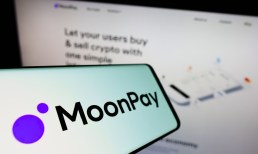All the user growth, however, did not translate into profits. Grubhub experienced a net loss of $67.8 million for the quarter, a dramatic downturn from the $27.7 million net loss of Q4 2019. The company offered no insight into these losses or its plans to turn them around in 2021. As the news release states, “Given Grubhub’s pending acquisition by Just Eat Takeaway.com, it is no longer issuing forward-looking guidance.”
Instead, the company focused on its relationships with restaurants. “From increased marketing spend and reduced commissions, to winterization grants and free digital ordering tools, we continue to be fully committed to assisting our restaurant partners,” said Founder and CEO Matt Maloney in the release. The winterization grants in question were a November initiative, in which Grubhub and the Restaurant Strong Fund provided $2 million worth of $10,000 grants for independent restaurants through the winter, according to a report from Restaurant Business Online. The funds, distributed through the Restaurant Winterization Grant, were available to eateries in Chicago, New York City, Boston and Philadelphia with five or fewer locations.
“Looking ahead, we’ve been working closely with the Just Eat Takeaway.com team on integration planning and continue to expect the transaction to close in the first half of 2021,” said Maloney. The $6.9 billion deal would make the combined company the biggest food delivery business outside of China and would give Just Eat Takeaway.com delivery inroads in the U.S., according to Reuters. The deal still needs approval from Grubhub shareholders and regulators. Under the terms, Grubhub shareholders will receive American depositary receipts (ADRs) representing 0.6710 Just Eat Takeaway.com ordinary shares in exchange for each Grubhub share. Grubhub shareholders will be entitled to ADRs upon completion of the deal, which will add up to around 30 percent of the total for the company, the companies said.
There is still a considerable upside for meal aggregators like Grubhub. A recent study highlighted in PYMNTS’ December Mobile Order-Ahead Tracker found that digital orders will make up 54 percent of QSRs’ sales by 2025, marking a 70 percent increase over values outlined in studies published before the pandemic’s onset. Restaurants of all types — even those that previously did not offer mobile ordering — have shifted to digital channels amid social distancing orders and dining room shutdowns, and customers have now incorporated these ordering methods into their daily lives. The report also found that approximately 90 percent of U.S. and Canadian restaurants now offer delivery, mostly through third-party programs like Grubhub.
However, the success of these delivery services depends on finding a fee that will be sustainable for restaurants and third parties alike. It is no secret that it’s been a difficult year for aggregators. Many areas are capping third-party delivery services’ fees to 15 percent to 18 percent, depending on the locale, in a marked decline from the typical 30 percent fee. While this is a major hit for the delivery services, it is unclear whether restaurants can afford much higher fees. In an interview with PYMNTS, Eric Jaffe, co-founder and chief operating officer of online ordering system ChowNow, explained, “Maybe [restaurants are] okay with paying those [third-party] commissions when 20 percent of your revenue comes through that channel, but when the model flips and suddenly 80 percent of your revenue is taxed by those commissions, your business model breaks.”
Advertisement: Scroll to Continue
Perhaps the most troubling signal that the aggregators might face a tough road if caps should they become widespread in a post-pandemic world comes from recent PYMNTS research. Vaccines have arrived and are being rolled out. In a recent PYMNTS study that delved into the intent to get vaccines – and, by extension, to venture back out into the real world – about 51 percent of consumers who have been ordering more food online from restaurants are likely to get a vaccine. Roughly 11 percent of those surveyed look forward to returning to restaurants. And individuals have been returning to on-premise dining, indicating that consumer behavior has not been permanently altered.
Read More On Grubhub:




